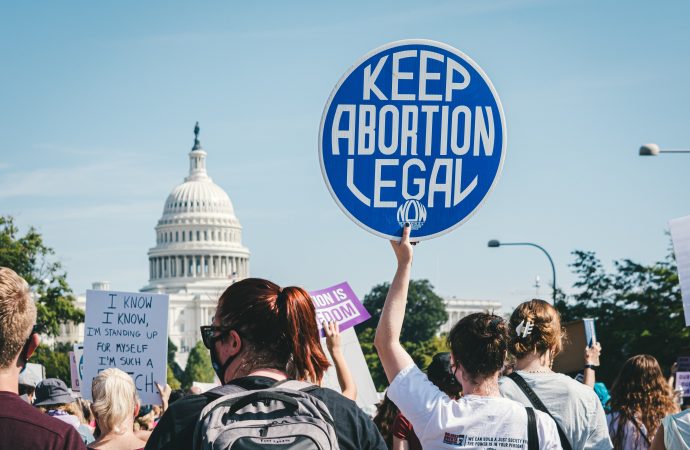As the political landscape surrounding abortion continues to shift, women’s access to safe and legal procedures is becoming increasingly difficult. With states enacting restrictive laws left and right, clinics are finding themselves in a tough spot. But despite these challenges, many are getting creative – by packing up shop and moving across state lines to
As the political landscape surrounding abortion continues to shift, women’s access to safe and legal procedures is becoming increasingly difficult. With states enacting restrictive laws left and right, clinics are finding themselves in a tough spot. But despite these challenges, many are getting creative – by packing up shop and moving across state lines to more liberal areas. In this blog post, we’ll explore the ins and outs of this trend, including why it’s happening, how it impacts patients’ experiences, and what the future might hold for abortion access across state lines.
The Current State of Abortion Access
Since the 1973 Roe v. Wade decision legalizing abortion, clinics across the United States have been fighting for access to abortion services. Regardless of a state’s stance on abortion, clinics have had to battle restrictive laws and regulations. However, over the past few years, clinics have begun to move to more liberal states in order to improve their access to abortion services.
One reason for this shift is that restrictive laws tend to be enacted in conservative states, while more liberal states are more likely to uphold Roe v. Wade as a legal precedent. Additionally, as more women enter the workforce and seek access to affordable health care overall, they are also seeking abortions. As a result, more clinics are opening in states like California and New York – which have long been considered bastions of reproductive rights – in order to serve these populations.
However, despite these positive developments, there are still many areas across the country where access to abortions is difficult or impossible for clinics to provide due to prohibitively low rates of availability or stringent regulations. For example, Texas has one of the most restrictive abortion laws in the country; yet it remains one of the few states where there is limited access to reproductive health care in general. In fact, according to data from The Guttmacher Institute , only nine out of 50 U.S. counties had an abortion rate below 10 per thousand women between 2010 and 2014 – compared with 46 out of 50 U.S. counties in 2002-2004 (the years
Clinics Moving to More Liberal States
Since the Supreme Court’s 1973 Roe v. Wade decision legalizing abortion nationwide, clinics have been moving to more liberal states in order to offer greater access to the procedure. With each new state that passes legislation permitting abortion, clinics are looking for new locations where they can continue providing abortions without the fear of legal retribution.
According to data collected by The Daily Beast, as of January 2017, there were 37 states where at least one abortion clinic was located outside of the state which had passed the most restrictive abortion laws. This demonstrates that even as legislatures pass increasingly restrictive abortion laws, clinics are finding ways to provide services in spite of regulations.
One such clinic is Reproductive Health Services (RHS), which is based in Albuquerque, New Mexico and provides abortions throughout much of southern and western Texas. RHS has consistently sought out new locations since it first opened in 1987, and has recently opened clinics in Austin and San Antonio. In addition, RHS plans to open a clinic in Houston later this year.
Despite being located in predominantly conservative states, these clinics have been able to operate legally thanks largely to their willingness to circumvent state law. For example, RHS does not require doctors who perform abortions at its clinics to have admitting privileges at a local hospital—a requirement many other clinics require in order to ensure safety for patients.
The Effect of Roe v. Wade on Abortion Access
Since the 1973 Supreme Court decision in Roe v. Wade, abortion access has been a contentious issue. However, over the past few years, clinics across the U.S. have been moving to more liberal states in order to keep up with changing legal climates. This shift has had a significant effect on abortion access, as liberal states have tended to legalize abortion earlier in pregnancy than more conservative states.
While this trend may not be permanent, it shows that abortion is an issue that is shifting and evolving- something that opponents of abortion rights should take into account when debating the issue.
Conclusion
Abortion access has been a hot topic in the United States for many years, with different states having vastly different stances on the matter. As of right now, abortion is still illegal in most states except for in cases of rape or when the life of the mother is at risk. This leaves women who are seeking abortions in those more conservative states with limited options, as all clinics that provide the service are located in just a handful of states. In recent years, however, there has been a move away from these stricter abortion laws by clinics across state lines.

















Leave a Comment
Your email address will not be published. Required fields are marked with *